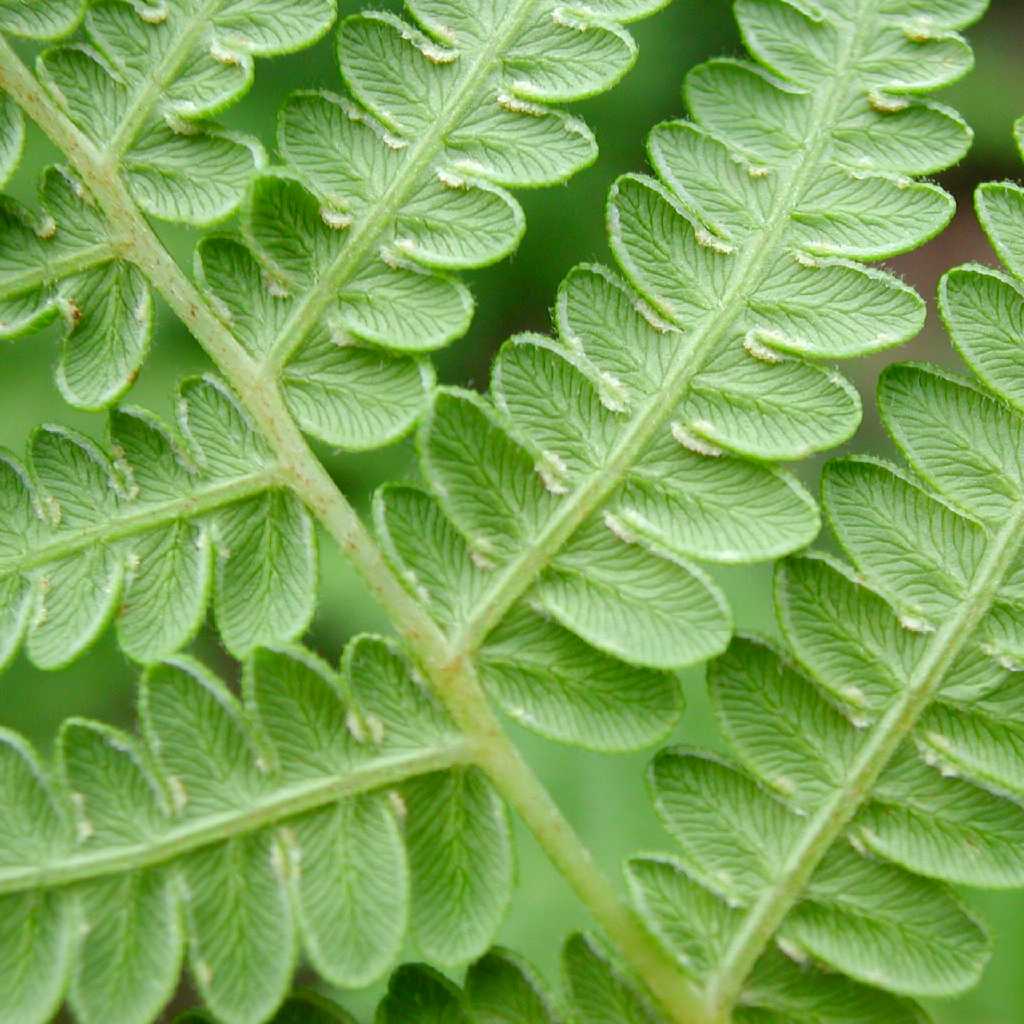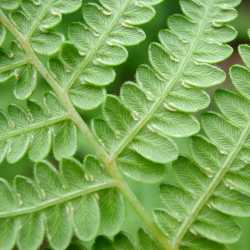Plants terrestrial, often forming colonies or thickets. Stems subterranean, slender, long-creeping; hairs pale to dark, jointed; scales absent; true vessels present (absent in other Dennstaedtiaceae genera in the flora). Leaves widely spaced, broadly deltate, 0.5--4.5 m. Petiole glabrous to short-hairy, without prickles, with stem buds near base, vascular bundles numerous, U- or O-shaped in cross section. Blade 2--4-pinnate, rachis and costae grooved adaxially; rachis without prickles; nectaries at base of proximal and sometimes distal pinnae. Segments pinnately divided, ultimate segments ovate to oblong to linear, base extending proximally on costae (decurrent) or proximally (surcurrent), margins entire. Veins free or joined at margin by commissural vein beneath sori, pinnately 2--3-forked. Sori ± continuous, covered by recurved, outer false indusium and obscure, extrorse, inner true indusium. Spores tetrahedral-globose, trilete, very finely granulate. x = 26.
RHIZOMES: moderately stout, deep-seated, very long-creeping, densely pubescent with multicellular hairs. LEAVES widely spaced, deciduous.
PETIOLES: shorter than to about as long as the blade, grooved adaxially.
BLADES: somewhat papery or leathery, broadly deltate, 2-4 times pinnately compound.
PINNAE: pinnatifid, acuminate at the tip, with numerous lobes, variously pubescent.
SORI: forming a more or less uninterrupted submarginal line.
INDUSIA: of 2 types, curled pinnae margins forming pseudoindusia opposed to excurrent true indusia, these linear, often poorly developed. X = 52.
NOTES: 5 spp., nearly worldwide. (Greek for “small fern”). The treatment here follows the recent classification of Pteridium to comprise 5 species, with a number of additional infraspecific taxa (Thomson et al. 2008). Many previous authors have followed Tryon’s (1941) treatment of a single species with a dozen infraspecific taxa.
REFERENCES: G.Yatskievych and M.D. Windham , 2008, Vascular Plants of Arizona: Dennstaedtiaceae. CANOTIA 4 (2): 38-40.
Petiole coarse, ±erect and stem-like, with several vascular bundles that unite distally to form a gutter-shaped bundle; blade ternate- pinnately 2-3 times compound, the ultimate segments pinnatifid but otherwise entire; pinnae opposite or nearly so; pinnules alternate, their segments oblong to linear with revolute margins; veins "free" but connected by a submarginal vascular strand on which the contiguous and confluent linear sori are borne, these protected by the recurved, modified lf-margin and a minute or often nearly obsolete hyaline inner indusial flap of tissue; coarse ferns with widely creeping rhizomes and coriaceous, deciduous lvs, the rhizome and often also the lvs provided with septate hairs. 1-several, by interpretation, cosmop.
Gleason, Henry A. & Cronquist, Arthur J. 1991. Manual of vascular plants of northeastern United States and adjacent Canada. lxxv + 910 pp.
©The New York Botanical Garden. All rights reserved. Used by permission.





